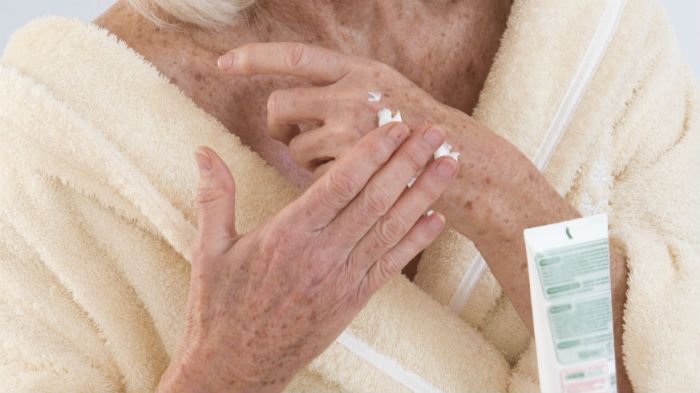Skin Cancer Awareness month may be winding down, but with the dog days of summer approaching on its heels, now might be a good time to think about your summer skincare routine.
Look, we all know the sun is bad for our skin, but with skin cancer — specifically basal cell carcinomas and squamous cell carcinomas — the most common cancer in the U.S. and current estimates indicating that one in five Americans will develop skin cancer in their lifetime, this is something worth revisiting.
So before you head out to catch some rays at the nearest pool, beach or park this summer, check out these tips from Dr. Mary L. Stevenson, a dermatologist and skin cancer surgeon at NYU Langone Health in New York, to avoid becoming a skin cancer statistic.
“I think a lot of people just aren’t aware of how common skin cancer is,” Stevenson said. “This is a great time to really remind yourself of good habits to develop for summer: wear SPF30 and above, reapply, wear enough sunscreen — if you bought one bottle last summer and you still have it, you’re probably not applying enough sunscreen.”
Is there really no such thing as a base tan?
Dr. Mary Stevenson: No tan is a good tan. Anytime your skin is turning red or darkening and tanning from the sun, it means you’ve had ultraviolet exposure that’s caused a DNA change, which can do damage and cause a cellular response. If you are getting color from the sun and not protecting yourself enough, no tan is really a good tan, whatever your shade of skin.
What are some of the biggest risk factors for skin cancer?
Risk factors include fair skin; a history of burns; a history of tanning; family history of skin cancer, patients with certain kinds of immunosuppression or patients with lymphoma; and for melanoma, we know men over 50 are at increased risk and people with a lot of moles or atypical moles. But just because you’ve had sun damage before doesn’t mean you can’t start preventing or further prevent sun damage now.
Is there an ideal SPF number to use?
I generally say anything SPF 30 and above is fine, though you do get better protection from higher numbers. But often those small changes in benefit are negated by the fact that we don’t reapply enough, and to begin with, we’re not putting enough on our skin.
So how much sunscreen should we be using?
We should think about a shot glass-sized amount for the exposed parts of your body, arms, chest, face, especially a pretty big dollop for your face. If you’re going out in a bathing suit, you’re going to need more, so whatever’s exposed needs to be covered — and you need to put on your sunscreen before you’re in the sun, not the second before you’re in the ocean; you want to give it some time.
When should we reapply our sunscreen?
When you get out of the ocean, even if it’s waterproof, and every two hours you should be reapplying your sunscreen. We have a lot of great products now, but sprays still have to be rubbed in, you cannot just mist them on yourself.

















